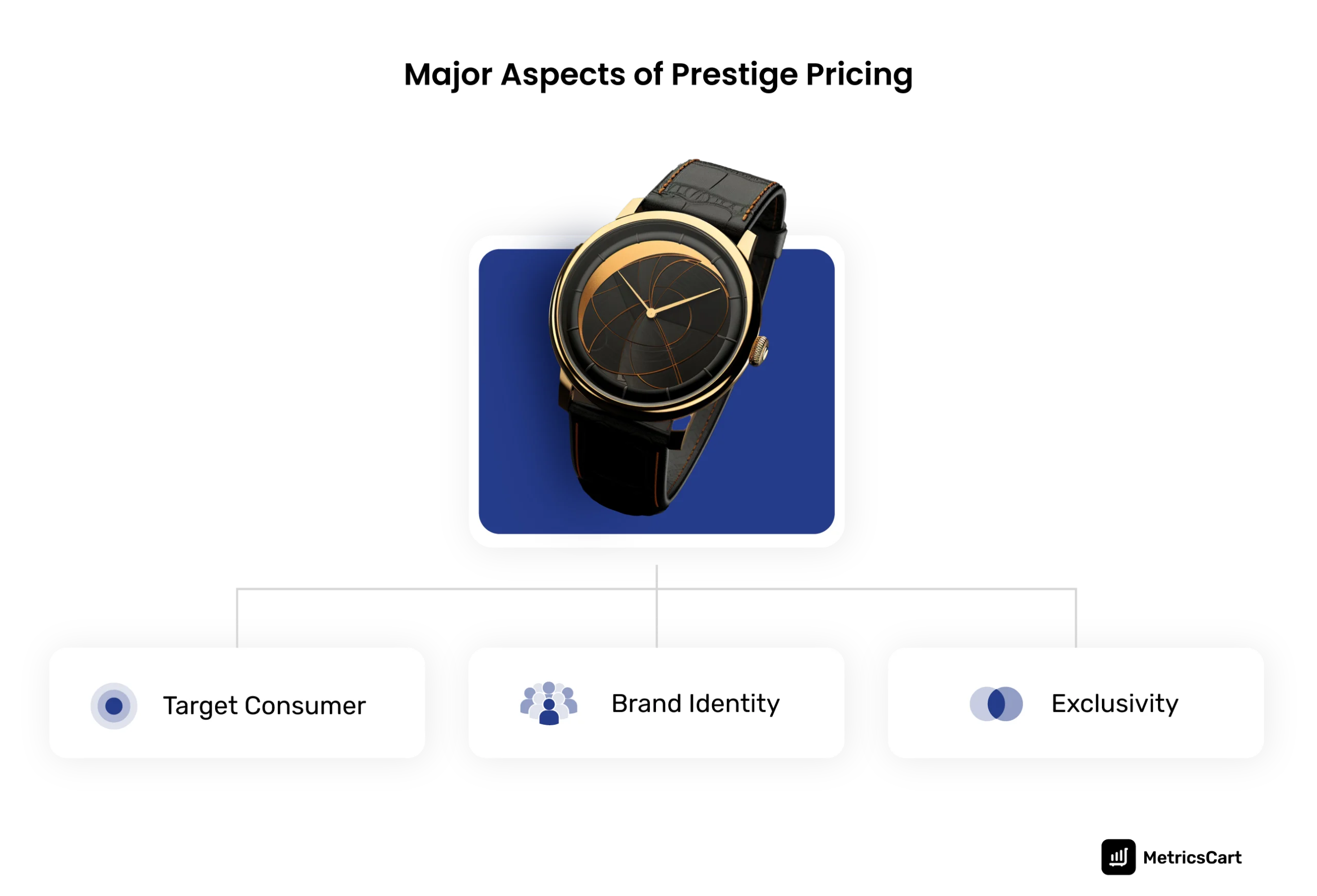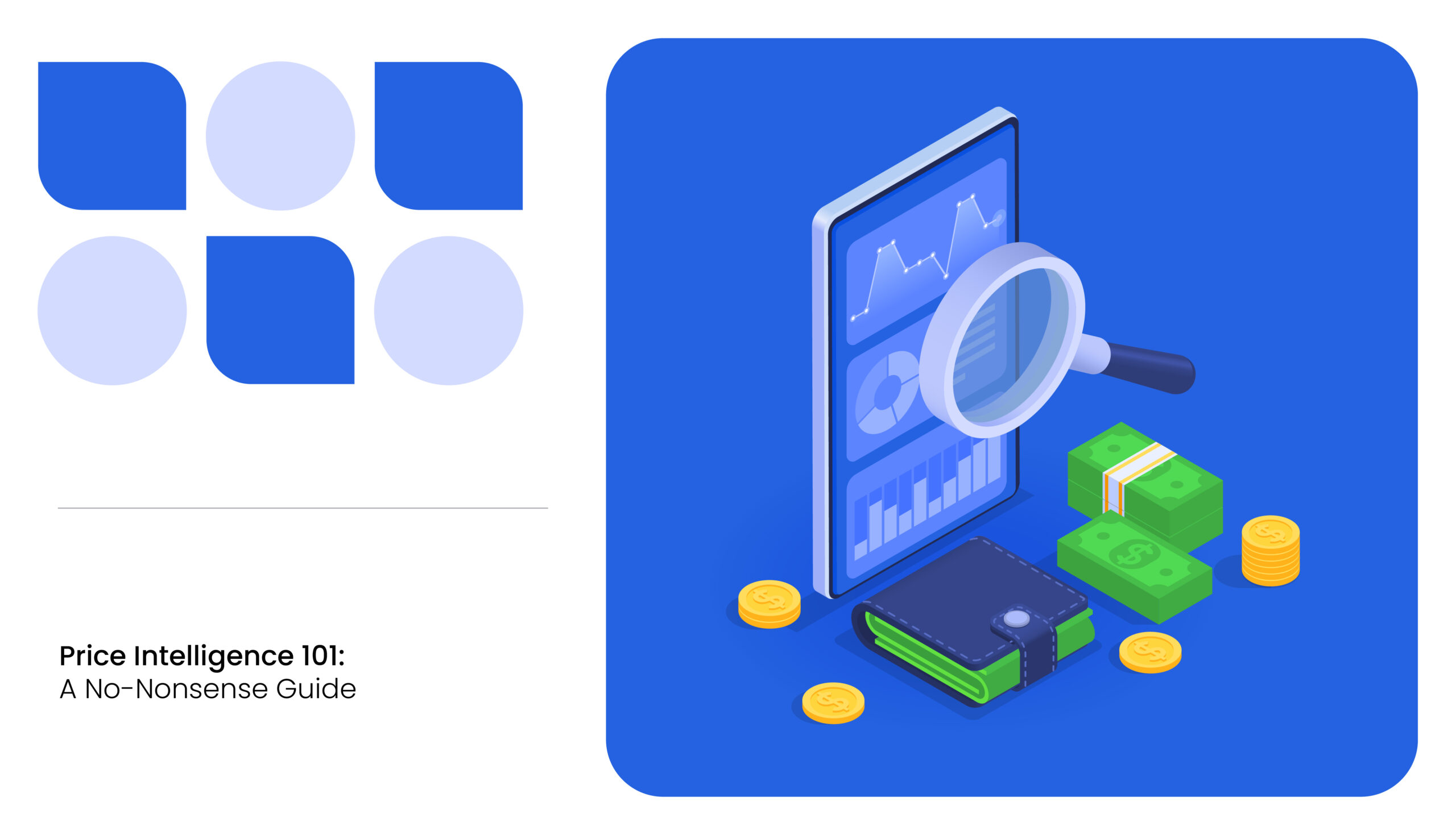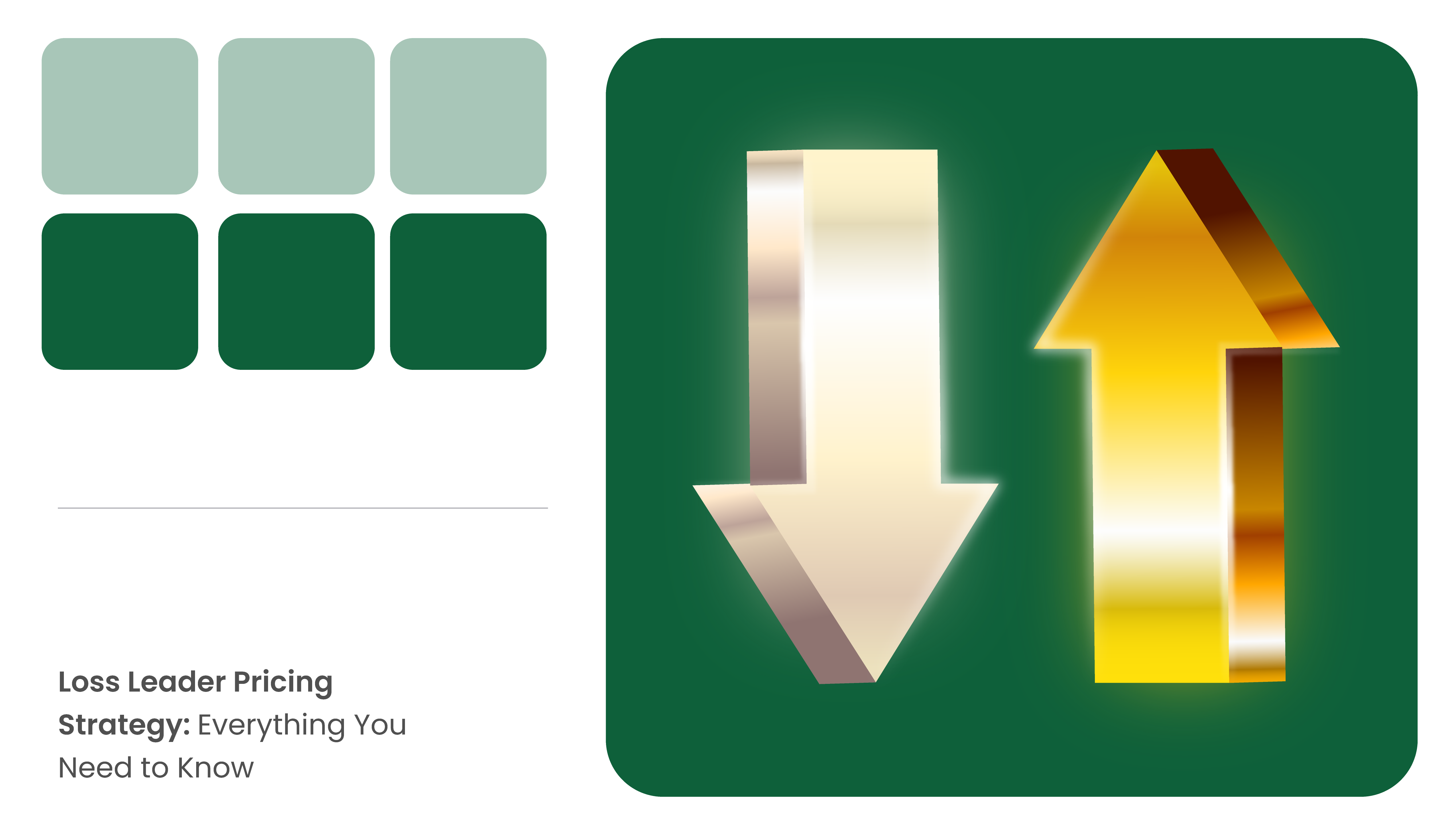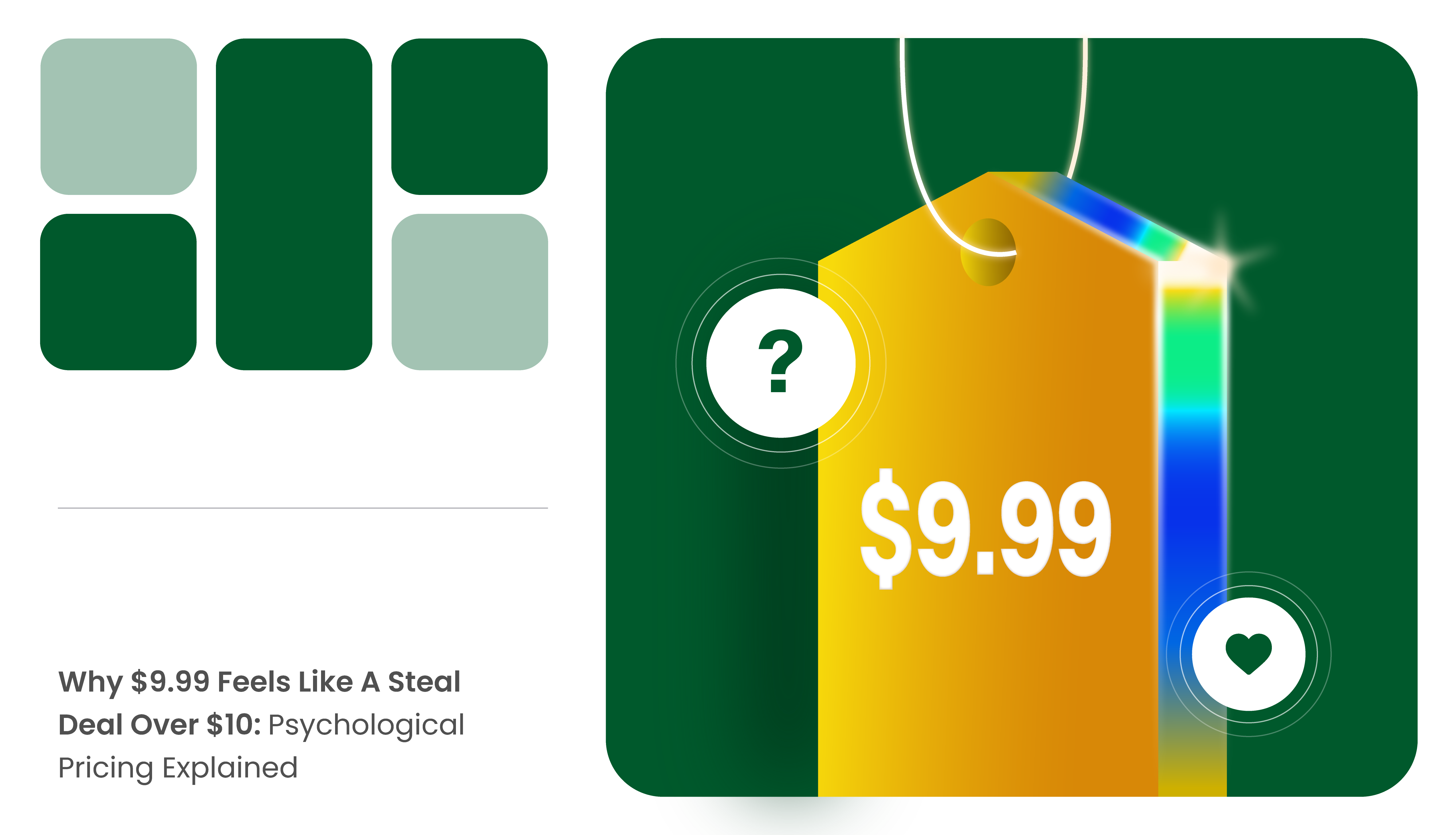Ever felt like owning one of the iPhone Pro Max models, a Rolex watch, or a Louis Vuitton designer apparel? These brands are part of the premium market and cost a fortune. Along with the utility aspect, these products are entrenched with a status quo factor that attracts the average consumer.
Equativ reports that the US luxury market is projected to reach $136 billion by 2027, and Gen Z consumers are shaping up the market with their evolving preferences. They are shifting from conventional luxury products like watches, coats, bags, etc., to casual items like sneakers, fragrances, and apparel.
What Is Prestige Pricing?
When a brand or manufacturer decides to fix a higher price for the product by creating a brand narrative of luxury or premium value, it is known as prestige pricing or premium pricing.
Prestige pricing has always been a conventional part of markets, especially in developed countries like the US. The spending power of consumers decides the various prestige pricing strategies brands employ.
The rationale behind this pricing strategy is that consumers generally tend to associate higher prices with better quality. Luxury brands do not believe in attracting many consumers using promotional pricing methods. Their consumer base is limited and this exclusivity becomes their marketing strategy.
However, not all products or brands can position themselves as a premium or luxury brand. Hence, the prestige pricing strategy can’t be applied as often or as dynamically as other economic pricing strategies like the EDLP strategy.
Read more | Curious to know more about online pricing strategies? Read our article Best Pricing Strategies for E-Commerce That Help Scale Business
Three Aspects of Prestige Pricing
Apart from the value of the products, customers pay a premium based on the respective brand’s strength and status in the market. The company communicates its brand’s value through its premium product prices.
Therefore, prestige pricing gives companies the ability to leverage a psychological marketing advantage by convincing consumers that:
- The brand’s product is of higher quality than companies that sell similar products
- There is an added value for the additional costs the consumers are paying
According to its purpose, the three major aspects of prestige pricing are:
Target Consumers
When a brand creates a luxury product, it should be clear about its target consumers. The marketing strategy and brand perception will be created around this target market and their spending habits.
Exclusivity
Consumers who prefer luxury brands would always like to be treated as an exclusive class. If everyone could access or afford the product, it wouldn’t be considered a luxury anymore.
One of the main examples is the luxury watch category. Consumers who buy premium brands like Rolex, Cartier, Hublot, etc., enjoy a certain exclusivity than others who shop economic watch brands.

Brand Identity
The brand identity of a luxury item is crafted with utmost care and sophistication. According to Ikon, a luxury branding agency based in London, the brand identity should carry an aura that can be experienced by the consumer across multiple channels. It is important to establish a distinct value proposition for the consumer to justify the product’s high price.
Why Should Online Businesses Choose Prestige Pricing?
Implementing a premium pricing strategy in your business comes with its own set of advantages and disadvantages.
Advantages of Prestige Pricing
- Increased revenue due to higher prices
- Boosts brand value because of product positioning
- Promotes organic marketing through testimonials and personal reviews
- Increase in demand and brand loyalty
Disadvantages of Prestige Pricing
- Decreased sales volume due to exclusivity and price
- High marketing cost because of brand perception
- Can negatively affect brand image if the product disappoints consumers
- Can’t compete with regular brands as It would diminish brand perception
The products in the premium or luxury category are items that may retain their value as collectibles or limited edition items. Hence, owning a premium product is an investment that reflects on multiple life aspects of the consumer.
For example, a consumer who has a premium brand car or a limited edition luxury watch believes that they have access to a certain social status that is considered to be unapproachable for regular people.
Prestige Pricing Examples Decoded with 5 Brands
The prestige brands considered below are top-tier in their respective categories and have an aura of exclusivity around them.

Nike has been around for a long time and has established itself as one of the top brands in shoe manufacturing. They offer products in multiple tiers starting from affordable shoes to higher-end limited edition products.
The Air Jordan series from Nike is known for its premium pricing and auctionable value. These sneakers are sold for over-the-top prices at various online retailers and used-items websites like eBay.
Nike’s pricing strategy is mainly based on its brand image and perceived value. The higher prices are set based on the brand perception around the Nike logo and other factors like celebrity endorsement, vintage value, etc.

Apple has been a consistent presence in the premium goods category for decades. From their premium personal computer Macintosh introduced in 1984 to the most recent iPhone series, Apple has always positioned itself as a brand with no competitors except itself.
Apple’s branding strategy involves the creation of multifunctional spaces. Apple Stores, the Worldwide Developers Conference (WWDC), Apple launch events, etc., help set up the premium experience of owning an Apple product. Consumers feel that they are part of an exclusive community that offers high-quality products.

Rolex was founded in 1905 and is known as a Heritage Brand. This long-term market presence favors the brand to create a premium experience. Consumers tend to trust heritage brands for their high-quality craftsmanship.
Besides quality, Rolex watches are known worldwide for their luxury appeal and high prices. These premium watches are equated with expensive jewelry and are owned as a status symbol by consumers ranging from business people to celebrities.
What makes the brand so special? It combines arbitrary and tangible factors like aesthetics, build quality, premium experience, brand identity, etc., to create a holistic perception of uniqueness around it.

Le Labo, a perfume brand, is a powerful example of a brand offering hyper-personalized experiences and solutions. Using the premise that a perfume’s quality deteriorates over time, Le Labo created a one-of-a-kind customer experience.
Each perfume bottle is hand-blended and prepared right in front of the customer. In addition, they print the date and name of the customer on the glass container, making it an exclusive experience for the customer.

Today’s digital era has made the human touch scarce and desirable. Luxury brands are tapping into this need and brand stories are a great way to merge this gap. Brand stories help companies strike the right balance between retaining the brand heritage and modernizing communication through various digital channels.
Gucci is another heritage brand that has stood the test of time to become one of the most sought-after and premium brands in the apparel industry.
The luxury brand has been projecting itself as a sustainable premium brand that utilizes all the best-sourced materials in its apparel production. They use organic marketing techniques to create social media conversations around their products.
Recently, online marketplaces have become hotspots for premium beauty care products. Amazon has launched a Premium Beauty category, hosting a huge list of high-end beauty brands like Aluram, Claus Porto, Elizabeth Arden, and many more. This is an example of how even premium or luxury brands must keep innovating their business strategies according to market needs.
Conclusion: Strategizing a Prestige Pricing Model
Understanding the strategies employed under premium pricing is important for any business establishing a new brand or planning to upgrade its pricing strategy.
Create a Tiered Pricing Strategy
A tiered pricing method is a classic pricing strategy to push your premium product into the market. In tiered pricing, consumers can compare different products offered under multiple pricing options.
The premium pricing is justified when the consumer is aware of the extra features and benefits of the top-tier product.
Employ High-End Marketing Techniques
Premium brands use extravagant marketing strategies to woo their consumers. This can include celebrity endorsements, expensive collaborations, sponsorships, etc. Creating a website that exuberates style, functionality, and brilliant user experience can also surge the value of a premium brand.
Use Psychological Pricing Methods
Consumers are hardwired to buy products that give them more value. Their approach toward economic pricing or premium pricing depends on this value proposition. Brands tap into the Veblen effect, a psychological phenomenon where consumers choose higher-priced goods to upgrade their social status.
A classic example is the representation of logos of premium apparel brands on their products, like a Dolce & Gabbana leather belt or a Versace tote bag. The presence of the logo justifies their high prices.
Read more | Intrigued by psychological pricing? Read more here: What Is Price Anchoring and How Does It Help Drive Sales?
Calculated Supply Chain Control
Most often, premium brands offer products that are available for a limited amount of time. By creating a scarcity around the product, brands can create demand. This strategy is mostly effective with luxury brands where exclusivity is a key factor.
All aspects of a product cycle, starting from production, distribution, and marketing, are carefully tweaked so that consumers feel the necessity to own the brand.
To conclude, prestige pricing in marketing has been employed by brands all around the world and it requires consistent brand value flowing through omnichannel. There is little room for error, and efficient price monitoring is key for brands to identify violators.
With MetricsCart price intelligence solutions, your brand stays numero uno. Get on a discovery call with us and secure your pricing decisions.







